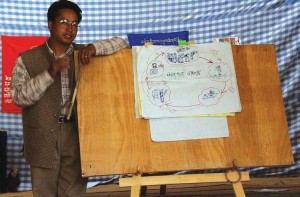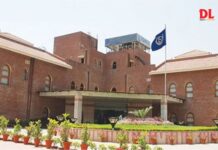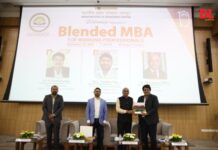The winds of change…
There are about 888 thousands educational institutions in the country with an enrolment of about 179 millions. Elementary Education System in India is the second largest in the world with 149.4 millions children of 6-14 years enrolled and 2.9 million teachers. This is about 82% of the children in the age group. Yet this state in India Jammu and Kashmir is educationally backward, despite the fact that it is the only state where education is free up to
university stage. Against the national literacy rate of 44.18% for males and 19.55% for females, the state has a literacy figure of 26.67%.
Winds of change througheducation policy
The Jammu and Kashmir government has launched an ambitious education policy- “Rehbare- Taaleem” to improve standards of education in the state.
Under the scheme, “Rehbar-e- Taaleem” (teacher) would be engaged for a period of two years on contract at a monthly honorarium of Rs 1,500. The
performance of “Rehbar-e-Taaleem” will be evaluated and reviewed by the village committee after two years before extending his appointment for a
further period of three years. From the third year onwards the teacher will be paid Rs 2,000 per month. After five years his/her performance will again be
evaluated and certified by the village committee before he/she is considered for permanent appointment. The education department has also started constituting village-level education committees. These committees comprise two members from the parents, a social worker and a representative of women, and Scheduled Caste/Scheduled Tribe. The village-level committee will supervise the functioning of the school and report the cases of absenteeism to the authorities. They will also address the problem of dropouts and supervise the implementation of various government schemes. The scheme will not only compensate shortage of teachers, but also provide teachers in the far-flung areas where many do not want to go.
Towards total literacy
• Massive drive launched to achieve total literacy by 2007 by effective implementation of SSA; 910 primary schools opened; 2500 Education Guarantee Centres set up; 237 primary, middle and high schools upgraded.
• All primary schools being
provided third teacher.
• Construction of 223 primary, 16 middle schools taken up; engineers’ self-help groups encouraged for taking up school building construction;
• 30,000 posts of teachers created, 7000 teachers appointed in transparent manner, 24000 more teachers being engaged, political interference eliminated.
• Free textbooks scheme extended up to 8th class; special grant of Rs. 50 million provided for improving conditions ofz
classrooms for students, mats provided in classrooms.
• New subjects being introduced in schools, biotechnology, biochemistry, environment sciences, humanities, psychology and sociology; computer education for higher secondary level. Seasonal schools have been opened for people in the hilly areas and for the scheduled castes. On the technical education side, there are two regional engineering colleges in the state. There are four polytechnics to
impart vocational training.
























